
8 Common Causes and Expert Solutions
Watching your beloved bearded dragon refuse food can be heart wrenching. If you’re wondering why is my bearded dragon not eating, you’re not alone this is one of the most common concerns among reptile owners. Loss of appetite in bearded dragons can signal anything from natural behaviors to serious health issues, so understanding the root cause is crucial for your pet’s wellbeing.
In this comprehensive guide, we’ll explore the most common reasons why your beardie won’t eat and provide actionable solutions to get them back to their healthy, hungry selves.

Understanding Normal vs. Concerning Appetite Changes
Before diving into specific causes, it’s important to recognize that bearded dragons naturally have fluctuating appetites. Adult beardies typically eat every other day, while juveniles need daily feeding. However, when your bearded dragon stops eating entirely for several days, it’s time to investigate.
8 Common Reasons Why Your Bearded Dragon Not Eating
1. Brumation (Winter Slowdown)
Do bearded dragons eat less in winter? Absolutely! Brumation is the reptilian equivalent of hibernation, typically occurring during cooler months.
Signs of brumation:
- Sleeping for days or weeks at a time
- Reduced activity levels
- Little to no appetite
- Seeking dark, cool hiding spots
What to do: This is completely natural. Continue offering food occasionally, but don’t worry if they refuse. Ensure they stay hydrated and maintain proper temperatures.
2. Incorrect Temperature and Lighting
Bearded dragons are cold-blooded creatures that rely on external heat sources for digestion. If temperatures are off, your beardie simply can’t process food properly.
Temperature requirements:
- Basking spot: 95-110°F (adults), 105-110°F (juveniles)
- Cool side: 75-85°F
- Nighttime: 65-75°F
Lighting needs:
- UVB lighting 10-12 hours daily
- Replace UVB bulbs every 6-12 months
3. Stress and Environmental Changes
Why is my bearded dragon not moving and refusing food? Stress is often the culprit. Bearded dragons are sensitive to changes in their environment.
Common stress triggers:
- New enclosure or location
- Loud noises or vibrations
- Other pets nearby
- Handling by strangers
- Improper substrate
Solution: Create a calm, consistent environment. Give your beardie time to adjust to any changes, and minimize handling during stressful periods.
4. Shedding Process
Do bearded dragons stop eating when shedding? Many do! Shedding is an uncomfortable process that can suppress appetite.
Shedding signs:
- Dull, grayish skin
- Patches of loose skin
- Increased rubbing against objects
- Bearded dragon acting lethargic
How to help: Provide humid hides, gentle misting, and warm baths to ease the shedding process.
5. Illness or Parasites
When your bearded dragon not eating or pooping, illness might be the cause. Common health issues include:
Parasites:
- Intestinal worms
- Coccidia
- Other microscopic parasites
Respiratory infections:
- Open-mouth breathing
- Mucus around nose/mouth
- Wheezing sounds
Impaction:
- Hard belly
- Straining to defecate
- Lethargy
Action needed: Consult a reptile veterinarian immediately for proper diagnosis and treatment.
6. Poor Diet or Food Quality
Sometimes the issue isn’t medical – it’s menu-related. Bearded dragons can be surprisingly picky!
Common diet problems:
- Offering the same foods repeatedly
- Poor quality feeders
- Incorrect food sizes
- Too many treats, not enough variety
Solution: Rotate between crickets, dubia roaches, vegetables, and appropriate fruits. Ensure feeders are gut-loaded and properly sized.
7. Age-Related Changes
Why is my baby bearded dragon not eating? Young beardies have different needs and challenges:
Baby/juvenile issues:
- More sensitive to environmental changes
- Higher protein requirements (80% insects, 20% plants)
- Smaller food items needed
Senior bearded dragon changes:
- Slower metabolism
- Reduced activity
- May prefer softer foods
8. Improper Enclosure Size or Setup
An inadequate habitat can stress your beardie and suppress appetite. Why is my bearded dragon not active? Often, it’s environmental.
Minimum enclosure requirements:
- Adults: 75+ gallons (4ft x 2ft x 2ft)
- Juveniles: 40+ gallons
- Proper ventilation and hiding spots
How to Get Your Bearded Dragon to Eat
Immediate Steps
- Check temperatures and lighting – Use reliable thermometers and ensure UVB is working
- Examine your beardie – Look for signs of illness, injury, or shedding
- Review recent changes – New foods, location moves, or environmental shifts
- Offer favorite foods – Try live feeders or colorful vegetables
Long-term Solutions
Create an optimal environment:
- Maintain proper temperature gradients
- Provide 10-12 hours of UVB daily
- Keep the enclosure clean and stress-free
Diversify the diet:
- Rotate protein sources (crickets, roaches, worms)
- Offer colorful vegetables (squash, bell peppers, collard greens)
- Limit fruits to occasional treats
Establish routines:
- Feed at consistent times
- Handle gently and regularly to reduce stress
- Monitor weight and behavior patterns
When to See a Veterinarian
Contact a reptile-experienced vet if your bearded dragon:
- Hasn’t eaten for more than 2 weeks (adults) or 1 week (juveniles)
- Shows signs of illness (lethargy, difficulty breathing, unusual discharge)
- Has not eating for a month despite your best efforts
- Displays dramatic weight loss
- Has hard, swollen belly (possible impaction)
Prevention Tips for Future Appetite Issues
Regular maintenance:
- Monthly deep cleaning of the enclosure
- Quarterly UVB bulb replacement
- Weekly weight monitoring
- Annual vet check-ups
Environmental stability:
- Keep temperature and lighting schedules consistent
- Minimize unnecessary changes to the habitat
- Provide adequate hiding spots and climbing opportunities
Conclusion
Understanding why your beardie not eating requires patience and observation. While appetite loss can be concerning, many cases resolve with simple environmental adjustments or time. Remember that brumation, shedding, and minor stress are normal parts of bearded dragon life.
However, don’t hesitate to consult a reptile veterinarian when appetite loss persists or accompanies other concerning symptoms. Your bearded dragon depends on you to recognize when something’s wrong and take appropriate action.
Have you experienced appetite issues with your bearded dragon? Share your story in the comments below, and don’t forget to bookmark this guide for future reference!
Frequently Asked Questions (FAQ)
Q: How long can a bearded dragon go without eating?
A: Adult bearded dragons can safely go 1-2 weeks without eating, while juveniles should not go more than a week. During brumation, adults may not eat for several months.
Q: Should I force-feed my bearded dragon?
A: Never force-feed your bearded dragon. This can cause stress, injury, or aspiration pneumonia. Instead, address the underlying cause of appetite loss.
Q: Can bearded dragons eat when they’re shedding?
A: Some bearded dragons continue eating during shed cycles, while others temporarily lose appetite. This is normal behavior and usually resolves once shedding completes.
Q: What are the best foods to tempt a non-eating bearded dragon?
A: Try live feeders like crickets or dubia roaches, brightly colored vegetables like yellow squash or red bell peppers, or small amounts of fruit like berries.
Q: How do I know if my bearded dragon is sick vs. just being picky?
A: Sick bearded dragons often show additional symptoms like lethargy, labored breathing, unusual discharge, or dramatic behavioral changes. Picky eaters typically remain active and alert.
You may also like
- Do Bearded Dragons Get Depressed?
- Healthy Bearded Dragon V/S Unhealthy
- Finding the Right Source: A Veterinarian’s Guide to Selecting Quality Dragon Providers
Share
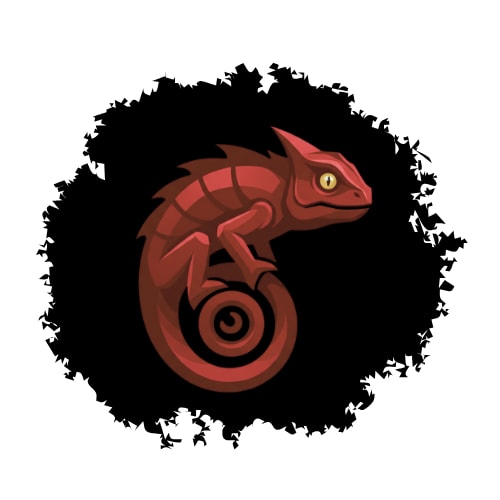
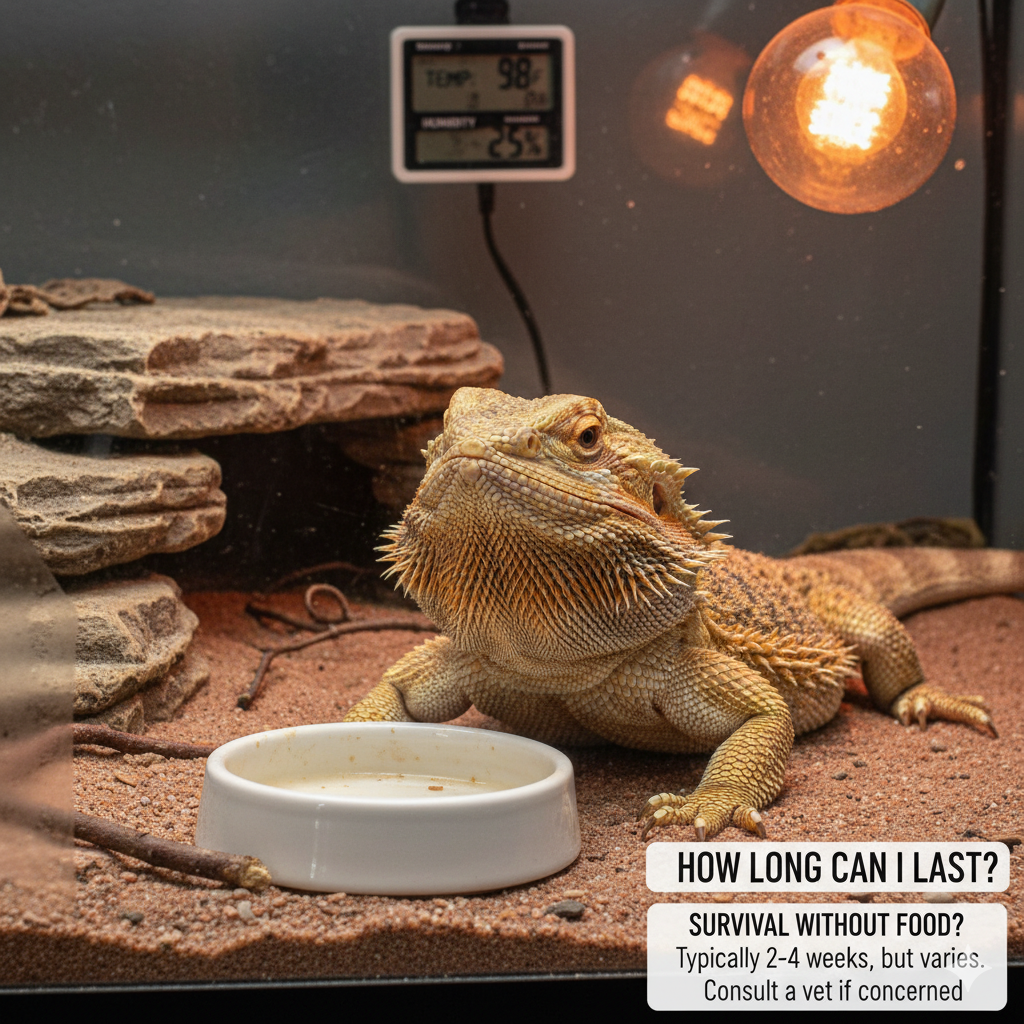
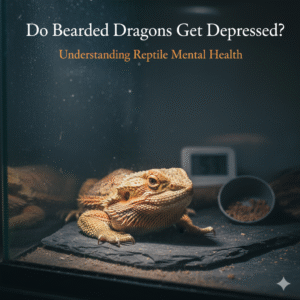
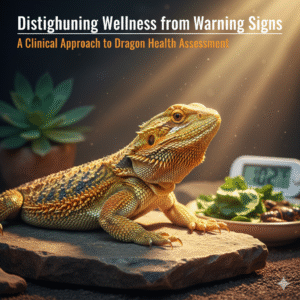
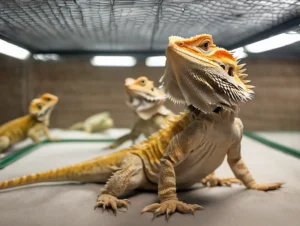
Leave a Reply